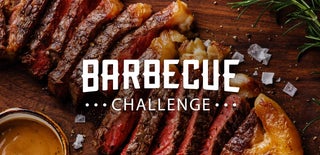Introduction: Feminist Barbecue Utensils
When I saw the barbecue challenge, I realized how little I know about grilling. I grew up in a city where almost no one had a back yard and where barbecues weren't really a thing so I never learned how to do it. I also recognized that whenever I went to a barbecue party, I had never seen a woman grill. I wasn't particularly interested in learning to grill at the time (especially since I don't eat a lot of meat) but the feminist in me thought I should try - for the safe of changing norms.
I'm the type of person who only started using a helmet on the bicycle once I got a helmet I loved. I thought a good way to motivate me to start grilling would be to make utensils I would be excited to use. Since I love the laser cutter at TinkerTech, the local maker space in Ypsilanti, Michigan, I thought I'd make some cool feminist utensils as an extra motivator!
I bought some utensils at the Salvation army for about $10 and got to work!
Supplies
- Barbecue utensils with wooden handles (can be second hand)
- Access to a laser cutter
- Optional: Software to vectorize images (such as adobe illustrator or inkscape)
- Optional: paint
- Recommended: varnish
Step 1: Select Your Visuals
I planned for three utensils to be laser cut, the first with two feminist icons of the "strong female reproductive organ" and the "raised fist". The second was a collection of feminist women icons:
- Hilary Clinton
- Michelle Obama
- Beyonce
- Louise Bourgeois
- Sonia Sotomayor
- Emma Watson
- Lena Dunham
The third was a collection of feminist engineering icons. I never got to the third one before leaving on vacation so there are no images of it!
Attachments
 noun_faculty of engineering_2083684.svg
noun_faculty of engineering_2083684.svg noun_engineer_94087.svg
noun_engineer_94087.svg noun_Lena Dunham_876089.svg
noun_Lena Dunham_876089.svg noun_Emma Watson_876091.svg
noun_Emma Watson_876091.svg noun_Beyonce_876090.svg
noun_Beyonce_876090.svg noun_Michelle Obama_940698.svg
noun_Michelle Obama_940698.svg noun_Hillary Clinton_876092.svg
noun_Hillary Clinton_876092.svg noun_Sonia Sotomayor_876088.svg
noun_Sonia Sotomayor_876088.svg noun_female engineer_2643363.svg
noun_female engineer_2643363.svg noun_feminism_2322413.svg
noun_feminism_2322413.svg noun_User_163917.svg
noun_User_163917.svg noun_Architect_216073.svg
noun_Architect_216073.svg noun_engineer_2321652.svg
noun_engineer_2321652.svg noun_Engineering_2010760.svg
noun_Engineering_2010760.svg
Step 2: Turn an Image Into a Vector File (svg)
Most of these icons were taken from the noun project and the images display the acknowledgement so you can go find them online too. I have also attached the svg files I used. One of the images I pulled from google images (I cannot find it again so cannot give you the source reference!) and with inkscape, vectorized it and made it into an svg file. I've attached the original image and the svg file here.
To do so, you'll want to pick an image that has simple contours so that it becomes a good file for the laser cutter to scan.
You can use an image processing software such as adobe illustrator, or the free version: inkscape. Once in inkscape, open your image, select it, and go to path>trace bitmap. A window will pop up with option, I usually use the default options (Single scan, Brightness cutoff, 0.500 Threshold). You can play around with the threshold if the first try doesn't trace your image well. Finally, delete the original image and save as an svg file.
When opening your file in lightburn for laser cutting, you might need to un-group your tracing with ctrl+U until the software can detect which parts to scan. Tip: if you delete/add an outer edge (by drawing a square around your image), the parts the laser will scan will inverse!
Attachments
Step 3: Prepare Your Lightburn File and Set Up the Laser Cutter
The laser cutter I use uses lightburn software. I imported all my images and set the cutting parameters. I used different colors to keep all my images in one file but only cut the ones in purple.
Set up the laser cutter according to instructions and place your utensil so that the origin point of the laser is right where you want it to start etching. I use the 'frame' function on lightburn so I can see where the laser will be cutting before starting the cut and make sure my utensil is positioned correctly. This step can be tricky, especially if your image is almost the size of the utensil, but do-able!
I've attached the file i used.
Attachments
Step 4: Make Sure Your Utensils Are Parallel
This utensil had to be taped to make sure the surface to laser cut was parallel to the laser!
Step 5: Laser Cut!
Let the laser do all the work!
Step 6: Put in Some Color
Since this cut didn't come out very visibly, I decided to put in some color before varnishing again. Just paint the utensil grossly (I painted that whole side of the utensil), then wipe away the paint. The parts that are varnished will be really easy to wipe off and the paint will remain in the laser cut parts because there is no varnish there! The result is great with very little effort. I recommend painting some varnish over all of your laser cut parts for durability and so the wood doesn't soak in water when washing the utensils.
Step 7: Enjoy Your Feminist Barbecue Utensils!

Participated in the
Barbecue Challenge












